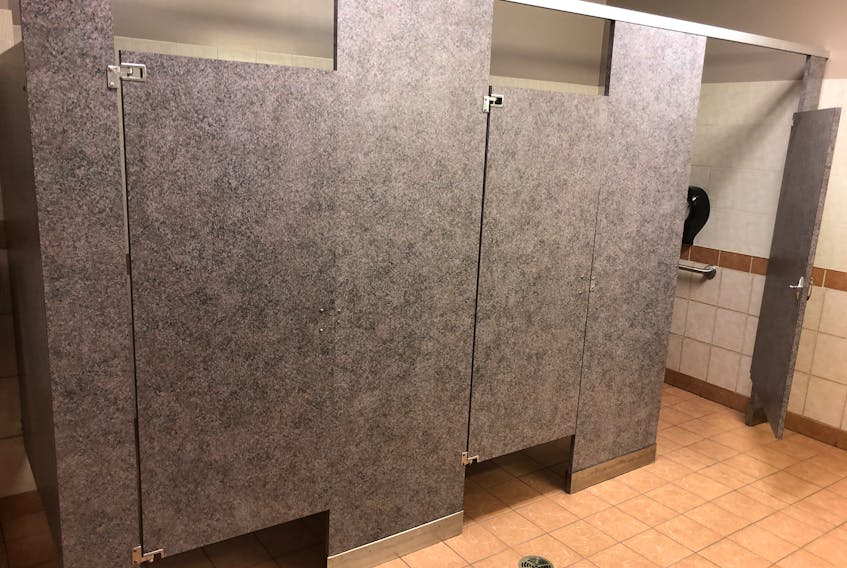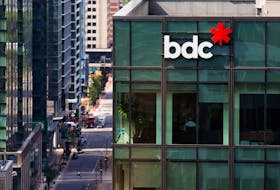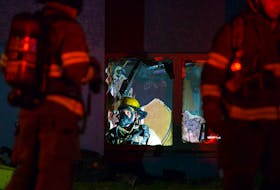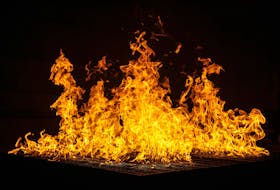SYDNEY, N.S. — Approximately 74 per cent of Cape Breton-Victoria Regional Centre for Education schools have high levels of lead in some of their water sources.
Water testing completed province-wide by the Nova Scotia Department of Education and Early Learning found that 28 out of 38 schools in the region had levels of lead higher than the Health Canada regulated maximum .005 mg/L.
Copper was also tested and eight schools in the district were found to have some water outlets with more than the maximum 2 mg/L.
The testing was started in December 2019 and according to the Water Test Results report released by the Department of Education on Oct. 1, 2020, it was done due to changes Health Canada made to their outline of standard safe levels of minerals in water.
In July 2019, due to new scientific findings, Health Canada lowered the maximum acceptable concentration of lead in water from .01 mg/L, set in 1992, to .005 mg/L. They also set the maximum acceptable level of copper in drinking water to 2 mg/L.
All water outputs in the schools were tested and include sinks in cafeterias, labs and classrooms, as well as water fountains.
Riverview High School appears to have the most water sources with higher than acceptable levels of lead. Out of 113 water outputs included in the report, 83 had higher than accepted levels of lead. The school also reported the highest number of water outputs with high levels of copper — 25 in total, of which 24 were reported to be in labs. One of these sources had nine times the safe level of copper.
The other schools with high levels of copper found in one or more water outputs are:
• Boularderie Elementary School (two water sources)
• Cusack Elementary School (one water source)
• John Bernard Croak V.C. Memorial School (two water sources)
• Memorial Composite High School (one water source)
• Sherwood Park Middle School (five water sources)
• Sydney River Elementary School (one water source)
• Whitney Pier Memorial (one water source)
The water testing found many schools have high levels of lead in cafeteria or "food" rooms and five schools were determined to have above maximum levels of copper and/or lead in drinking fountains. These are:
• Dr. T.L. Sullivan School: one fountain with almost two times the maximum concentration of lead
• John Bernard Croak V.C. Memorial School: two fountains, one at the maximum level of lead and more than double the limit
• Malcolm Munroe Middle School: one fountain slightly over the maximum level
• Memorial Composite High School: three fountains all with over the maximum concentration of lead, one of these also has almost four times the maximum level copper
• Middle River Consolidated: one fountain with 64 times the maximum concentration of lead
Minister of Education Zach Churchill spoke about the water testing results at a press conference after the report was released on Oct. 1 and says the findings aren't cause for concern and said the department is in the process of taking appropriate steps to fix the problem.
Last year, more than 320 schools were moved to bottled water only for drinking while the testing was being done.
Due to the COVID-19 pandemic, water fountain usage is prohibited and bottled water will be provided indefinitely.
Signs have been put in schools telling students which water faucets are for hand washing only and any taps that don't meet Health Canada safety standards will have restricted access.
The Cape Breton Regional-Victoria Centre for Education has sent letters to parents informing them of the tests and plans for remediation.
Copper levels in water — what you need to know to stay safe
Some copper is harmless but high levels of it in drinking water can be harmful and Health Canada developed new guidelines for maximum levels last summer.
Now, Health Canada is recommending 2 mg/L of copper is the maximum amount that should be in drinking water.
Usually, copper pipes cause the mineral to seep into drinking water. Hot water can increase the release of copper and other metals from plumping into water.
Health Canada advises that bathing or showering in high levels of copper does not pose any health risk and it can't be absorbed by the skin or inhaled.
However, ingesting too much copper can cause health problems. Short term, these are nausea, stomach pain, vomiting and diarrhea. Long term it can cause liver or kidney problems.
Infants are more at risk for falling ill because their bodies absorb more copper, they drink more water based on body weight and are less able to remove copper from their bodies because their organs are still growing.
To temporarily reduce copper levels in drinking water:
- Use only cold tap water and let it run for one minute before drinking, cooking or preparing infant formula
- Flush out plumbing after water has been sitting in pipes for a few hours such as first thing in the morning or after returning from work
- Clear pipes by flushing the toilet, taking a shower, or starting a load of laundry
*NOTE: Information from Health Canada









